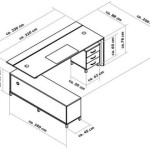What Is the Groundwater Table in Geography?
Understanding the groundwater table is fundamental to comprehending the Earth's water cycle and the intricate interplay between surface water and subsurface water resources. The groundwater table, also known as the water table, represents the upper limit of the zone of saturation, where all pore spaces within soil and rock formations are filled with water. It plays a crucial role in sustaining ecosystems, providing drinking water, and supporting agricultural activities.
Key Points about the Groundwater Table
The groundwater table is dynamic and fluctuates based on various factors, including precipitation, evaporation, and human activities. Its location and elevation can vary significantly across different regions and over time.
1. Formation and Movement of Groundwater
Groundwater originates from precipitation and snowmelt. When rain falls, a portion of it seeps into the ground, infiltrating the soil and rock layers. As water percolates downwards, gravity draws it deeper, filling the spaces between soil particles and rock fractures. The zone where all these spaces are completely filled with water forms the saturated zone. The upper limit of this saturated zone is the groundwater table.
Groundwater does not remain stagnant. It flows slowly through porous rock and soil layers, guided by gravity and pressure gradients. The rate of flow depends on the permeability of the rock or soil, which is a measure of how easily water can pass through it. Highly permeable materials, such as gravel and fractured bedrock, allow for faster groundwater flow, while less permeable materials, such as clay, impede flow.
2. Factors Affecting Groundwater Table Fluctuations
The groundwater table is not static; it fluctuates in response to various factors, both natural and human-induced.
Natural Factors
- Precipitation: Increased rainfall or snowmelt replenishes groundwater reserves, raising the water table. Conversely, prolonged droughts can deplete groundwater levels, lowering the water table.
- Evaporation: Evaporation from surface water bodies or soil can draw water from the saturated zone, lowering the water table.
- Topography: Groundwater flow is influenced by topography. In hilly areas, the water table typically follows the contours of the land, sloping downwards.
- Geology: The type of rock and soil underlying a region significantly impacts groundwater storage and flow. Permeable formations, like limestone, allow for abundant groundwater storage, while impermeable rocks, like granite, limit groundwater accumulation.
Human-Induced Factors
- Irrigation: Extensive irrigation practices can draw down groundwater levels, particularly in arid or semi-arid regions where water demand is high.
- Urbanization: Urban development often leads to the replacement of permeable surfaces with impermeable ones, such as concrete and asphalt, reducing infiltration rates and lowering the water table.
- Well Pumping: Excessive pumping of groundwater from wells can lower the water table and create cones of depression around the wells. If pumping rates exceed the natural replenishment rate, groundwater levels can decline significantly.
3. Importance of Groundwater Table
The groundwater table is vital for several reasons:
- Drinking Water Source: Groundwater constitutes a significant portion of the world's drinking water supply. Many communities rely on aquifers, underground layers of rock or soil that store groundwater, for their water needs.
- Ecosystem Support: Groundwater sustains aquatic ecosystems, including rivers, streams, and wetlands, by providing baseflow, which is the continuous discharge of water from groundwater into surface water bodies.
- Agricultural Irrigation: Groundwater is a major source of irrigation water in many agricultural regions, particularly during dry seasons or in arid climates.
- Industrial Use: Groundwater is also utilized by industries for a variety of purposes, including manufacturing, cooling, and washing.
Monitoring and managing groundwater levels are essential for sustainable water resource management. Understanding the groundwater table and its dynamic nature allows us to make informed decisions regarding water use, conservation, and protection.

Water Table Definition Depth Examples Lesson Study Com

What Is Groundwater The Foundation

Ground Water

Groundwater Ck 12 Foundation

Ground Water

Groundwater Water Table Aquifers And Springs The Geo Room
Groundwater Wikipedia

Water Table Aquifer What Is Hydrology

Ground Water

8 M Throughflow And Groundwater Storage
Related Posts








